The Birth of the San Joaquin Wildlife Sanctuary

The Legend and a Collection of Perspectives
on the Man Behind Its Existence
~ PEER SWAN ~

CONTENTS:
- The Legend
Anonymous - Safari at the IRWD Reclamation Site
Nancy Swan - Preservation of the San Joaquin Marsh
Max Jamison - Ranch Hand of the Year Award
Irvine Historical Society - Historical Perspective
Judy Liebeck - How Sea & Sage Audubon Found a Home in the Sanctuary
John Bradley - Restoring the Duck Club Building
John Walter - The San Joaquin Wildlife Sanctuary
Melanie Ingalls - More About Peer Swan
Nancy Swan
This history of the San Joaquin Wildlife Sanctuary is from the collection of Nancy Swan who graciously gave us permission to post it here on our Sea and Sage Audubon website.
The Legend

Pow!
The peace was broken.
Plop!
A duck fell out of the sky
in front of a woman jogging along a road in Irvine.
Incensed, she contacted the city of Irvine and asked how this could happen, setting the wheels in motion for a series of events that led to the abrupt demise of the last remaining clubs, and eventual birth of the San Joaquin Wildlife Sanctuary.
These last two clubs by now had combined to share the lease, the Twenty Ranch Duck Club and the San Joaquin Club.



The City of Irvine promised the woman they would investigate, and discovered that the long time lease of the two family duck club had expired, leaving them the opportunity to close them down. The fact was, for years the club had been buying the water to fill the large ponds that attracted the migrating ducks and geese, filling ponds that were an eco-system for lots of other small birds and wildlife.


By closing down the Duck Club in order to protect a couple of ducks (very few by comparison were actually shot over the course of a year), the source of the water was also shut down, leaving lots of birds and critters in jeopardy of losing their habitat or migration stop.

Peer Swan, then President of the Irvine Ranch Water District, asked the city what they wanted to do about the water that no longer was being purchased. If closing down the clubs was to protect the birds, what would happen when their water and food source dried up? Did the city want to take over the expense that had been shouldered by the two small private duck clubs? The city agreed to do that rather than renew the Duck Clubs’ lease and did so for some time. Eventually though, it became clear what a huge financial burden that was, and they began looking for a way to cut costs. Peer Swan, too, had been looking for a solution and had an idea.
Safari at the IRWD Reclamation Site
by Nancy Swan
“I want to show you something,” Peer said to me. We drove out past the sewer treatment plant, parked, and took off on foot for a walk that I swear could have rivaled any safari. He walked me back into the reeds and trees on the back portion of the property, ducking under branches, and stepping, stooped over, on the top of a spongy mat of reeds that had fallen over ditches and dry creeks. It was impossible to know you were in the heart of Irvine. “We must be in Africa somewhere, far from civilization,” I thought.

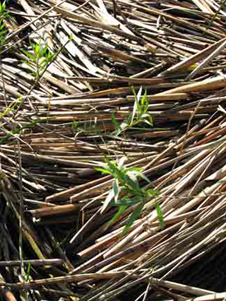
It was amazing and peaceful, the birds were twittering in the trees, there was scat from animal life around, and it was very quiet in an otherwise frantic city. You wouldn’t even know about civilization except for an occasional airplane overhead. He shared with me an idea he had about turning this land and maybe the land around it into a nature preserve for everyone to enjoy as a respite from civilization. As the months passed and he noodled the idea around in his head, I began to call it, “Peer’s People Sanctuary”. He not only wanted it to preserve nature but he wanted it for the public too, to enjoy, rejuvenate, and commune with nature. It would not be the kind of preserve that was protected from people, but meant to co-exist with them – no fences – and he believed both would thrive. How would he sell this concept to those who wanted to protect nature from people?
| Over the ensuing months, I watched him as he thought about all the things he would have to do to make it happen. It wasn’t going to be easy; there was so much to overcome. Mostly he had to convince the skeptics that he was sincere and build a core of people who could share his dream. |
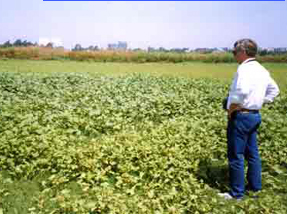

It was a slow process, but first and foremost, he had to convince the Water District itself that it would be in their best interest to use the property around the treatment plant for such a use. He knew also that the Water District would need a coalition of respected partners in this endeavor. There were many competing interests and all of these are stories unto themselves. But he would not give up and things fell into place slowly as he methodically was able to convince others of his sincerity, overcome their doubts, and show them the merits of what he had in mind.

| With the help of a lot of wonderful people sharing his enthusiasm, it would later become a reality called the San Joaquin Wildlife Sanctuary, and all these years later, it is still a work in progress, his vision reaching out to the future, and a gift to the city of Irvine and to the public. |
The Preservation of San Joaquin Marsh
by Max Jamison
member of the original Twenty Ranch Duck Club
The Irvine Ranch connected to the Back Newport Bay has been a haven for migratory and related birds before man arrived on the scene. In the 1800’s, duck hunting was well established with hunting extending to the areas bounded by Red Hill, Barranca, Culver, and stretching all the way to include the Back Newport Bay.

During the migratory seasons, several hundred thousands ducks of all species were present. This lasted until the early sixties when development took over. Long term duck clubs that went back to the turn of the century began to disappear. The Aliso, Spring, Drake, San Joaquin, Farmers and the renowned Bolsa Chica Duck Clubs disappeared. All that was left was the Old San Joaquin and the 20 Ranch Club.

The 20 Ranch moved all its remaining buildings to the area that joins the Irvine Water District. Chester F. Dolley held the club together from the early thirties and fought for its survival, along with his son Rip. My brother, Dick Jamison, and I became the remaining members. Chet invited Bud Hamilton of the Old San Joaquin Club and his group to join and share the remaining area leased from Irvine. The 20-Ranch Clubhouse is now the main building on the Sanctuary.

As early as the mid-seventies, it became apparent that the marsh would not survive unless someone took the leadership. After many attempts and frustrations, I was able to meet Peer Swan. One thing lead to another and I perceived, with great relief, that there was a man who could do the job. He probably would have done it all on his own, but it was apparent that if there was anything I could do, it would be to support his desire to preserve and restore as much of the habitat as was reasonably possible.
The rest is history, and history in the making. One does not need to tell you what Peer has done nor tell you that before this is over, Peer will have established what was once a dream.
| Without his talent, interest, foresight and dedicated effort, this marsh would not be here today. He has been the leader, the dedicated person who has and is making it all happen. |
September 7, 1997
The Irvine Historical Society presents
“Ranch Hand of the Year Award”
to Peer Swan

with deep appreciation for saving seven heritage buildings
and the last wooden windmill on the Irvine Ranch,
and enabling all to be rehabilitated
to continue to serve the community.

with the IRWD (seen sitting in its new location at the reclamation plant)
Peer Swan led the preservation effort of a number of historic homes and the landmark windmill while president of the IRWD board of directors. Because he makes decisions and acts on them, citizens of the City of Irvine will be able to appreciate many examples of their history that — without Peer — they would not have. This booklet is dedicated to Peer Swan, who has been a friend of the Irvine Historical Society for many years.
Congratulations on being named our first
“Ranch Hand of the Year.”
Historical Perspective
by Judy Liebeck, Irvine Historical Society

The Irvine Ranch Water District’s Reclamation Plant sits on an important piece of local historical real estate. It marks the beginning of the recorded history of the Rancho San Joaquin, with Don Jose Andres Sepulveda’s hacienda close by and the Indian rancheria on the site; the parcel has been used continuously since Sepulveda’s original Mexican land grant of 1837.
By the time the ocean waters receded, the area has always been a marsh. But not since the Native Americans used the reeds of the swamp to build their homes, has the land been used productively until the Irvine Ranch Water District targeted the site for their reclamation facility. It didn’t take long until there was no place left in the developing city of Irvine for the Rancho San Joaquin Duck Club.

It was March of 1982, immediately after a city council meeting, when I met Peer Swan. I was talking with Barbara Wiener, probably complaining about the shortsightedness of whatever it was the council had just decided about historic preservation. Otherwise, I rarely came to a council meeting, preferring to clean the interiors of bathroom cupboards or some such form of entertainment instead.
Peer approached our group and began talking to Barbara who introduced us. I had, of course, heard of Peer — I did have a pulse and I did live in the city. Peer was irritated and said something to the effect of, “Doesn’t anybody in this city care about who they elect to the water board? That’s one of the most important responsibilities! Doesn’t anyone in this city care enough about who’s running to put on a forum for the voters?”


One can imagine that not everyone in the crowd stepped forward and volunteered. I was going to school and trying to save historical areas on the ranch, and I was on Barbara’s steering committee for her bid for council and I had two children under ten. I had a few things on my plate but apparently I was not as busy as everyone else in the group. Peer looked at me. Everyone else looked at me. I felt guilty about having an extra twenty minutes in each day — I had originally thought of using that time to sleep. “OK, I’ll do it,” I heard myself say. “By the way, what’s involved?”
And so began my association with Peer Swan, a man who convinced me of how easy it would be to put on the only public forum for water district board hopefuls in the 1982 election. It may not have been everything Peer led me to believe, but it was a wonderful learning experience in addition to great fun, and I’ll never be sorry I got involved.

|
The forum was a success and the people I wanted to serve on the board were elected. Barbara won her bid to council, I didn’t get a divorce (yet), my children. didn’t ask to be disenfranchised from our family and we saved Old Town Irvine, (barely). But apparently I extracted my share of guilt from Sir Peer because he has been a champion — veritable prince — of historic preservation. He was always there when we needed him, and I wasn’t smart enough to recognize when the first time was. It was the Irvine Ranch Market windmill, the last remaining wooden windmill on the Ranch. |
Unless anyone who reads this has been involved in trying to save historic structures in the City of Irvine, they probably will not appreciate the difficulty in trying to save something of historic value. The property owner doesn’t give a rat’s hind quarters about historic artifacts. The City more often than not, tends to side with the property owner for reasons we will not go into here. So when Caltrans was ready to begin work at the old market site, the windmill was still standing, its vanes turning in the breeze, useless except as a landmark and a memory for the travelers on Interstate 5.

The Historical Society had been asking the City about saving the windmill for quite some time; it wasn’t a big surprise. But there was no interest and, of course, no money, and there was the standard question, “By the way, how many members are there in the historical society?” The standard measure of how bad are we going to look if we splinter the thing?
The newspaper came and wrote a story. Front page of Metro. Lots of people read the article, and the phones began to ring. A priest from Los Angeles who collected windmills, a doctor from Fallbrook who would love to have the artifact, and the lady from San Diego who wanted to pay $1,000 for the antique and install it in her garden. Oh pleazzzzzze! Isn’t there anyone in this city who is interested in saving the last windmill, the likes of which used to dot the landscape?


which need to be saved

The answer was, “Yes.” Enter Peer. He pointed out that the windmill which used to pump water from a well in Rattlesnake Canyon, should be saved as a symbol of the Irvine Ranch Water District’s heritage. He had the equipment, the manpower, and the desire. It didn’t take him more than a few hours to mobilize his troops, and within a day or two the team was out there, ever so carefully saving a piece of our heritage. The crew was made up of men who had worked on or were very familiar with the Ranch and who were very interested in saving the windmill. Today, that windmill stands as a monument to the district and to this day, it is appreciate by everyone with an ounce of nostalgia in their genetic makeup. Without Peer, there would be no windmill. You can put money in the bank on that!
Working with Peer is fun because he is a doer. He doesn’t just talk about something he wants to do — he decides, plans, and then just does it. Take, for example, the three historic houses that were taken from around the ranch, then were moved to the marsh. Development pressures required the homes to be moved. The historical society had been working with the city to relocate the homes for safe storage until a place could be found in which to place them. This type of negotiation takes time — more time than we had. This type of endeavor takes money to move the homes, purchase the property upon which they will sit, and refurbish them to make them habitable.

(Vandalizd at original location)
When tenant homes are vacated and sit out in a field with no protection from the human elements, they get trashed. These homes, as important as they were, were practically destroyed inside. They didn’t look too hot from the outside, either. It’s not easy to find anyone with the resources and the interest required to restore these structures.
Peer recognized the value of saving important structures within the community, He volunteered to store the three homes at the Magazine Road reservoir site until we could find a permanent home. That took care of the immediate problem and it was a solution that no one else cared to offer.


Peer recognized that it wasn’t a good solution and it didn;t take him long to put an equation together that it benefited both the water district and the historical community. He proposed that we move the homes to the reclamation facility and reuse them for key employees who could oversee the safety of the facility in case of catastrophic emergency. The key employees who could save the equipment and the surrounding area should a disaster occur, could not afford to live close to work; one even lived in another county!

This would insure an affordable solution to their housing needs, the needs of the Irvine Ranch Water District, and of every citizen of Irvine who would benefit by the actions. The families who would live in the homes would work on their rehabilitation, thus ensuring long-term care for the homes.


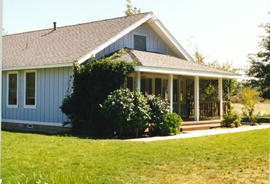

At the same time, work was beginning on the recently vacated duck club. Here was another one of Peer’s visions. The duck club site was perfect for a people sanctuary and Peer had every intention of making it happen.

The projects unfolded together, and today this site is one of the most peaceful, relaxing meeting areas available to the public that can be found in the city of Irvine. Through Peer’s long-range vision, this city has amenities that it would otherwise have lost.




Newly expanded again meeting room – 2006. Both add-ons perfectly matched
the structure of the original Duck Club building

A Step Back in Time,
it still retains the ambiance of the original
A lot of Irvine’s leaders have come and gone, leaving their mark, but not their legacy. Peer is in this for the long term. If he doesn’t have the most tenure as an elected official, then he is damn close. But where Peer stands apart is in his tenacity, bolstered by a personality that subscribes to Ted Turner’s philosophy that people either lead, follow, or get out of the way.
Thank you, Peer, for being the historical community’s champion when no one else who could have made a difference seemed to be willing or able.
How Sea & Sage Audubon
Found a Home in the Sanctuary
by John Bradley
Past President of Sea & Sage Audubon

I first encountered Peer on the dirt road along the San Diego Creek flood control channel, outside the IRWD waste water treatment facilities three years ago. I was doing my Audubon thing — birding the creek on one side, on the other, scoping out the bird life on the duck ponds. I learned from Peer that some of those duck ponds were also serving as seasonal storage ponds that kept the treatment facilities from sinking into the San Joaquin Marsh during the rainy season. Of course, Peer enlightened me as to this function of the ponds. I soon learned a lot more about the Irvine Ranch Water District and Peer Swan, and he learned about the Spotted Sandpiper.
Some months later, I received a call from Peer Swan. He was calling me in my past role as president of Sea & Sage Audubon. I learned then that he was President of the Irvine Ranch Water District Board of Directors. He wanted to explore with me an idea he had that might benefit both our organizations and the community. Did I say Idea? It was really a vision of the future of the San Joaquin Marsh. Of course, Sea and Sage Audubon was interested! It held the promise of an exciting environmental education program, an enhanced freshwater marsh, an opportunity to make a real contribution to the long term management and restoration of the San Joaquin Marsh, and a long dreamed of “Audubon House.” I wondered, was it just a coincidence? The Audubon Society had recently been named a recipient of a $100,000 grant to further the cause of wildlife conservation and environmental education in a water-related project from the Joan Irvine Smith and Athalie R. Clarke Foundation.

It’s been two and a half years since those meetings. I look around and see a tremendous amount that has been accomplished in a short period of time as a result of this joint environmental venture by the Irvine Ranch Water District and Sea & Sage Audubon. We have seen the institution of an education program focusing on the resources of the San Joaquin Freshwater Marsh, complete with curriculum materials, docents, school teachers, and thousands of curious children and their parents, monthly nature walks into and around the marsh, waterfowl habitat management guidelines. A volunteer group based in the Audubon House serves the public every day of the year. There is native planting and other habitat enhancement programs relying on volunteers from many different segments of the community, and on and on.
The way I see it, Peer Swan and his team at IRWD have taken some bold initiatives that draw us all out of our sometimes divisive positions and posturing. His vision and his encouragement has us all working together to create an urban environment of the highest environmental quality.
Restoring the Duck Club Building
by John Walter
Irvine Ranch Water District

The Duck Club building is approximately 50 years old and has been a part of the San Joaquin Marsh for almost 25 years. The building originally was located near the Tustin Lighter Than Air Base as a duck club hunt building. As development, both industrial and agricultural, pushed southward from the Tustin area, the open land for duck hunting became less and less. This building was moved several times before it arrived at the Twenty Ranch Duck Club in the late 60’s. Twenty Ranch operated this building as a duck club until the late 80’s.
Development brought a halt to the practice of operating a hunt club inside an urban area. The Irvine Ranch Water District immediately began an effort to rehabilitate the Duck Club, what is now the Audubon House, and construct a public restroom facility for civic events. In addition to restoring the Duck Club buildings, IRWD planted the area with many native plants and forged a cooperative venture with environmental groups to utilize this natural area for study and discussion.
The Irvine Ranch Water District also actively involved the Sea & Sage Audubon Society in the formation of the San Joaquin Wildlife Sanctuary Inc, a non-profit educational foundation. The purpose of the San Joaquin Wildlife Sanctuary Inc. is to promote better understanding of the wetlands and wildlife. In this purpose, Sea and Sage Audubon has been extremely successful involving almost 4,000 children since 1992 through an extensive half-day long nature discovery program for elementary school children, and a week long summer study program about Orange County Wildlife.
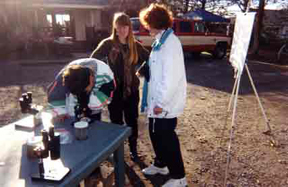
the Beginning of the Education Program
There has been great cooperation between the Irvine School District, Irvine Ranch Water District, Sea & Sage Audubon, and National Audubon Society. The Irvine Ranch Water District also joined in a cooperative venture with the city of Irvine, the Irvine Historical Society, and the Irvine Company to preserve the three historical houses that are on the property today. All of these houses were slated for demolition, but were saved and moved to this location where they were refurbished by the Irvine Ranch Water District and utilized for employee housing.
Nancy,
These are the facts as I remember them. To be totally honest with you, you can take out almost every phrase where it says Irvine Ranch Water District and insert Peer’s name. One day when he and I were driving around the marsh, he asked me if I thought that this entire vision was worth it. I told him that it was an ambitious vision, but certainly one worth having. I have found participating in his vision to be one of the best work experiences that I have ever had in my life. And you are exactly right, he never does like to take credit.
John Walter
The San Joaquin Wildlife Sanctuary
by Melanie Ingalls
National Audubon Society
Peer had a vision of a special place — a sanctuary where wildlife and people could co-exist in the midst of one of the fastest growing urban areas in southern California. We were delighted, when we met him, to find out that we were part of that vision.

Over the past few years, we at Audubon have been the beneficiaries of Peer’s boundless energy and generosity. He helped build Sea and Sage Audubon a home of its own at the San Joaquin Wildlife Sanctuary, and made it possible for us to work with the chapter to help thousands of young people in Santa Ana and Irvine develop a love, respect for, and understanding of the natural world. His drive and enthusiasm have helped to create a haven for birds and a gift for future generations.

~ More About Peer Swan ~
by Nancy Swan

Peer’s favorite place to rejuvenate

Student Body President
I knew when I married Peer that my life would never be dull. I met him as a student at Orange Coast College where he was the student body president. We married in 1969. He was a helicopter pilot for the Army and flew in Vietnam.
Like a young Don Quixote, Peer left his hometown in Massachusetts at 18 looking for adventure and a fair maiden to rescue. I’m glad I became his “Dulcinea” thirty-seven years ago, although I confess I’ve felt a bit more like Sancho Panza following him around the countryside than any Dulcinea. However, my life has been full of adventures that I never would have had without him.
As a student of languages, of course I hoped to travel abroad; but I admired Peer’s belief that Americans should get to know their own country first, and he led the charge, showing me and our children every state and almost every province of Canada over the years in a VW Westfalia (you can never really appreciate the country from 30,000 feet).
One of our first marathon trips came shortly after he finished graduate school. He decided to (gasp) quit his job, give up our apartment, and put everything we owned in storage so he could live a bit of his dream. We traveled around the country for three months with a two year old boy and a five month old dynamo daughter who didn’t believe in sleep.
Peer, my modern Don Quixote, viewed the country with his mind on its future everywhere we traveled, as much as for how it was in the present. He would invite strangers to sit with us in restaurants and he talked to people everywhere. “How are things where you live? What kinds of problems are you having? and What are you doing to fix it? Is it working?

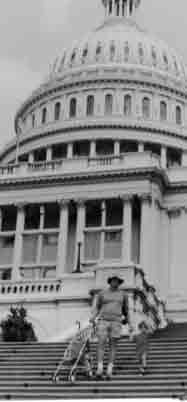
He was gathering information and understanding. We met wonderful people all over the country who were willing to share their ideas with us. He was always thinking, “How could he make things better?” Peer is a kind of artist himself, and he saw he country with a creative eye. He has painted it in his mind a thousand times. It has brought the whole family to public service, elections, volunteerism, fundraising, and all around community involvement.
Peer saw the position of director of the Irvine Ranch Water District was now open to a publicly elected representative and the rest is history. The first year he was elected, I received flowers addressed to the Monday night widow, (the night of its regularly scheduled public meeting). It failed to mention the Tuesday, Wednesday, Thursday, Friday, and believe it or not, Saturday and Sunday he gave to the job in his spare time! He was fortunate enough to have a full time position at Pacific Scientific which encouraged community involvement and was immune to political pressures.
He eats, sleeps, and drinks ‘water’ and the challenge of making government work efficiently for a change. He has now been a Director on the Irvine Ranch Water District for twenty-seven years and I think there is no doubt that Irvine Water District has benefited from his leadership.


Tilting at Windmills
|
I learned a long time ago that Peer is willing to speak out on the things he believes in — even if he’s a lone voice in a sea of opposing opinion. I think to myself, “Oh dear, don’t say that here,” and try to make myself invisible. Many times I have seen him take on a controversial issue and almost always, to my amazement, there is a whole group of silent people who were waiting for someone else to speak up first. Relieved, they now have a spokesperson, they chime in after him enthusiastically. In my opinion, that is the definition of a true leader. Though he professes to enjoy a good joust with a “windmill” occasionally, he makes friends as often as not. With a gift for seeing farther down the road and around more corners than most, he is usually right on target. |

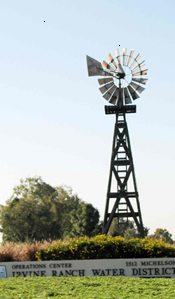
has become IRWD landmark
Doing what he believes to be the “right” thing for the greater good, even if it makes his own life more difficult, he has a well defined work ethic; and whether you agree with him or not, he always knows the “why” for his own actions. No one ever has to wonder if he is getting a tailored version of the truth, when asked he will give a straight forward and honest response.
His education, experience in finance, and head for numbers helps him guide government to make public policy decisions based on good business sense. More than willing to listen to any opposition, he can be persuaded to change his mind on a topic when a good argument is put forward that speaks to the issues and has the facts and numbers to back it up
